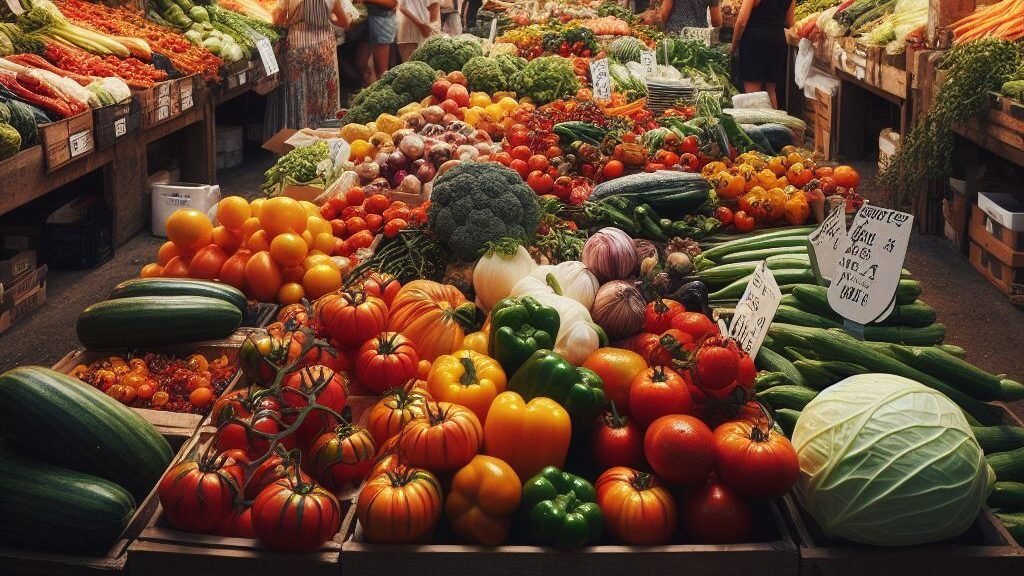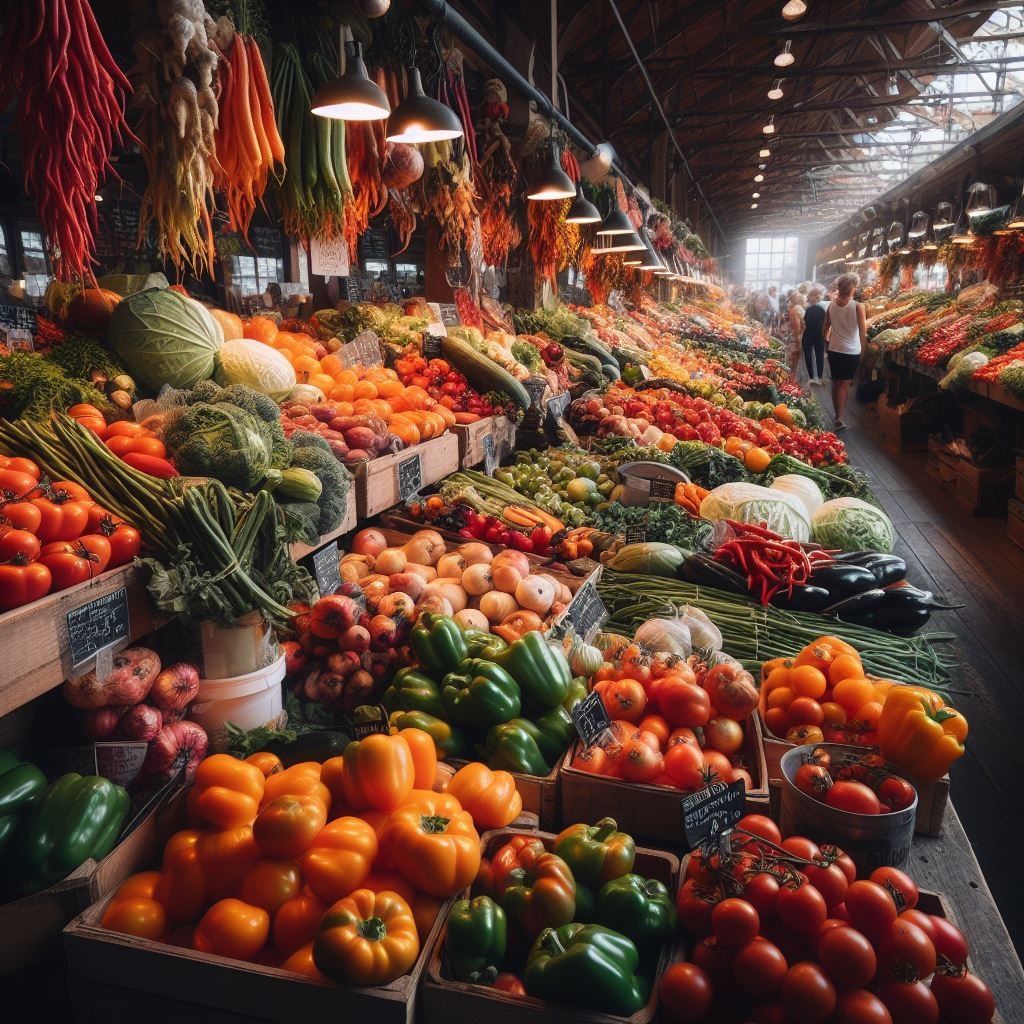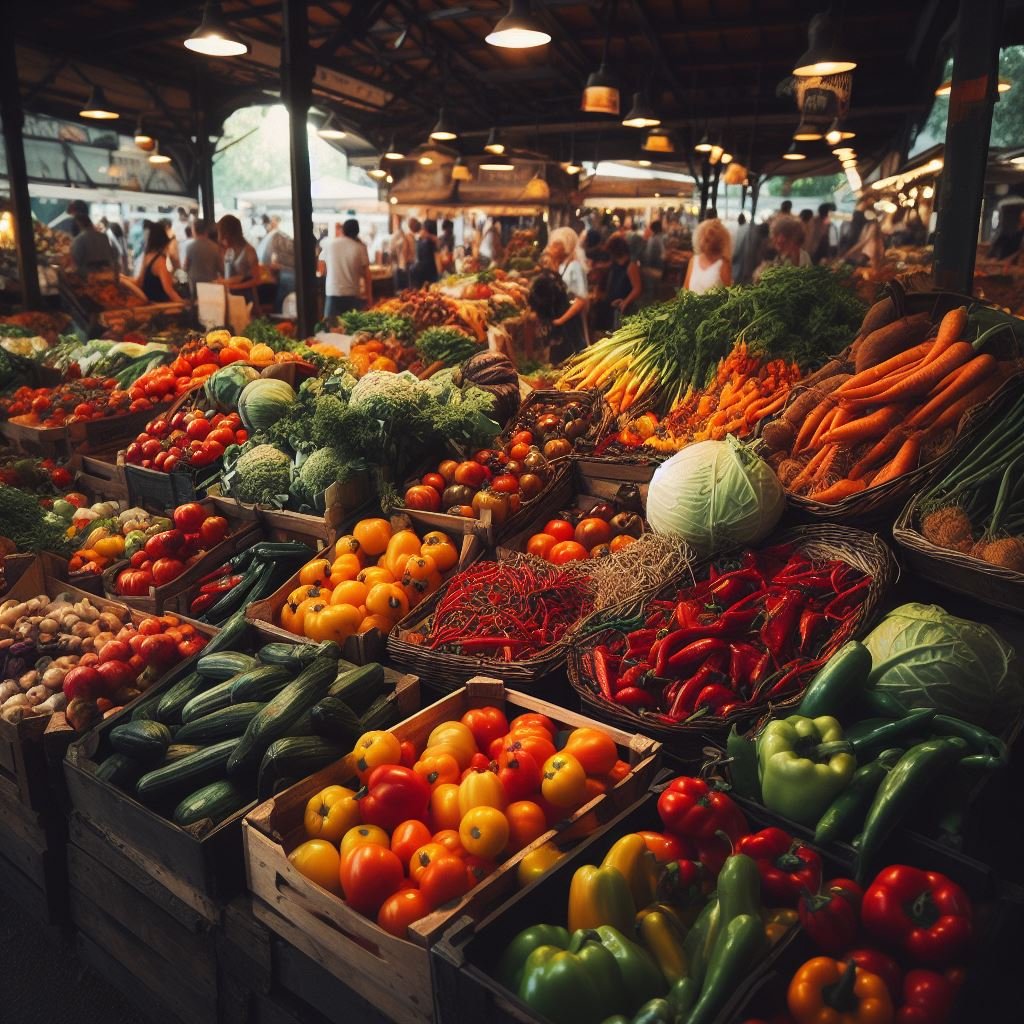Are you ready to explore the world of the best tasting vegetables ever for Picky Eaters? Vegetables are not just about nutrition, they’re also about tantalizing our taste buds with their unique flavors. In this guide, we will journey through the garden of nature’s finest, as we uncover the most delicious vegetables that you simply must try. From the familiar to the exotic, prepare to be surprised by the depth and variety of tastes that await.
Introduction
Why Taste Matters in Choosing Vegetables
Taste plays a pivotal role in choosing vegetables as it directly influences our eating habits and overall dietary choices. Vegetables, laden with essential nutrients, are a cornerstone of a healthy diet. However, if they don’t appeal to your palate, it may be challenging to incorporate them into your meals regularly.

The best tasting vegetables can transform any dish, making it not only nutritious but also delightful. A vegetable’s taste can vary depending on its variety, how it’s cultivated, and how it’s prepared. Exploring these factors can open up a new world of flavors, making your journey to a healthier lifestyle a delicious one. Thus, choosing vegetables based on taste is equally crucial as considering their nutritional value.
The Role of Freshness in Vegetable Flavor
Freshness is a crucial factor that significantly impacts the flavor of vegetables. Freshly harvested produce maintains its natural sugars and essential oils, which are responsible for its distinctive, rich taste. As time passes after harvesting, these sugars gradually convert into starch, causing the vegetable to lose its flavor. Similarly, essential oils start to evaporate, further diminishing the taste.
Therefore, consuming vegetables as close to their harvest time as possible ensures you experience their best flavor. This is why locally grown, seasonal vegetables often taste better, as they are typically fresher than their counterparts shipped over long distances. Incorporating such fresh, best tasting vegetables into your diet not only enhances your culinary experience but also contributes to a more sustainable food system.
The Best Tasting Vegetables Ever
Let’s embark on our culinary journey through the garden of the best tasting vegetables and learn how each one contributes to a unique flavor experience.

1. Artichoke
Artichoke offers a subtly sweet, nutty flavor with a tender texture. Its large flower buds are edible and are especially delicious when steamed.
2. Asparagus
Asparagus has a tender yet crisp texture with a mildly sweet and slightly bitter flavor. It’s perfect for roasting, grilling, or steaming.
3. Beets
Beets possess a pleasantly earthy taste with a hint of sweetness. They can be roasted, boiled, or eaten raw.
4. Bell Peppers
Bell peppers are incredibly versatile, offering a sweet and mild flavor. They can be eaten raw, grilled, roasted, or stuffed.
5. Broccoli
Broccoli has a slightly bitter, mildly sweet flavor. It tastes excellent when steamed, stir-fried, or roasted.
6. Brussels Sprouts
Brussels sprouts have a sweet, nutty flavor, especially when roasted. They also taste great when sautéed with bacon or tossed in salads.
7. Butternut Squash
Butternut squash is sweet and nutty. It’s perfect for roasting, sautéing, or pureeing for soups.
8. Carrots
Carrots are sweet and crunchy, excellent for snacking, steaming, roasting, or adding to soups and stews.
9. Cauliflower
Cauliflower has a mild, slightly nutty flavor. It’s versatile and can be roasted, mashed, riced, or made into cauliflower steaks.
10. Corn
Corn is wonderfully sweet and juicy, excellent when grilled, boiled, or incorporated into salads and salsas.
11. Cucumbers
Cucumbers are cool and refreshing, making them perfect for salads, sandwiches, or creating pickles.
12. Eggplant
Eggplant has a rich, complex flavor that shines when grilled, roasted, or cooked in stews and pasta dishes.
13. Garlic
Garlic adds a pungent, spicy flavor to dishes. It’s a staple ingredient in many different cuisines.
14. Leeks
Leeks have a mild, onion-like flavor, perfect for soups, stews, and stir-fries.
15. Mushrooms
Mushrooms have a meaty texture and umami flavor that enhances any dish. They’re great sautéed, grilled, or used in sauces.
16. Olives
Olives have a unique bitter, salty flavor. They’re typically used in salads, pasta, or as a pizza topping.
17. Onions
Onions are sweet and tangy with a sharp aroma. They are a kitchen staple that can be used in almost any savory dish.
18. Peas
Peas are sweet, starchy, and slightly grassy. They’re great in salads, soups, and pasta dishes.
19. Potatoes
Potatoes have a starchy, versatile flavor. They can be baked, mashed, fried, or roasted.
20. Spinach
Spinach has a slightly bitter flavor, perfect for salads, sautéing, or adding to smoothies.
21. Tomatoes
Tomatoes are sweet, tangy, and slightly acidic. They’re excellent in salads, sauces, or roasted.
22. Zucchini
Zucchini is mildly sweet with a slight crunch. It’s perfect for grilling, roasting, or using in zoodles.
By incorporating these best tasting vegetables into your diet, you’ll not only enjoy a variety of flavors but also reap numerous health benefits.
How to Enhance the Flavor of Your Vegetables

Cooking Techniques that Preserve Flavor
Preparing vegetables in a way that preserves their natural flavor can significantly enhance your culinary experience. Here are some cooking techniques that can help achieve this:
1. Steaming: Steaming is a gentle cooking method that helps retain the texture, color, and flavor of vegetables. Moreover, it prevents nutrient loss, making it one of the healthiest ways to cook vegetables.
2. Roasting: Roasting vegetables at a high temperature can caramelize their natural sugars, unlocking a depth of flavor and adding a delicious crispiness. Olive oil, salt, and pepper are all you need to roast vegetables to perfection.
3. Grilling: Grilling imparts a smoky flavor to vegetables, enhancing their taste. It also creates a pleasing texture, with a charred exterior and tender interior.
4. Sautéing: Sautéing in a little bit of healthy oil can bring out the flavors of vegetables, especially when combined with fresh herbs and spices.
5. Blanching: Blanching involves briefly boiling vegetables and then plunging them into ice water. This process preserves their vibrant color and crisp texture, making it ideal for green vegetables like broccoli and green beans.
6. Braising: Braising involves lightly frying vegetables and then simmering them in a small amount of liquid. This method creates a flavorful sauce while keeping the vegetables tender and juicy.
Remember, each vegetable has a unique taste and texture, and different cooking methods can highlight these characteristics. Experiment with these techniques to discover your favorite ways to prepare the best-tasting vegetables.
Pairing Vegetables for Maximum Taste
An exciting aspect of experimenting with the best-tasting vegetables involves combining them in creative ways to maximize their flavors. The key to successful pairing is to balance different tastes and textures, creating satisfying contrasts and harmonies. Here are some pairing suggestions that you might find delightful:

1. Tomato and Basil: The sweetness of tomatoes is accentuated by the fresh, peppery notes of basil, creating a classic flavor combination that’s perfect for salads or pasta dishes.
2. Carrots and Peas: The sweet taste of carrots perfectly complements the slightly grassy flavor of peas, and their vibrant colors make for a visually appealing dish.
3. Bell Peppers and Onions: The sweet and mild flavor of bell peppers is balanced by the tangy punch of onions, making this duo a staple in stir-fries and fajitas.
4. Garlic and Mushrooms: The pungent, spicy taste of garlic enhances the meaty, umami flavor of mushrooms, resulting in a rich and satisfying taste experience.
5. Spinach and Lemon: The slight bitterness of spinach is brightened by the acidic tang of lemon, adding a refreshing twist to salads or cooked spinach dishes.
6. Butternut Squash and Sage: The sweet and nutty flavor of butternut squash pairs beautifully with the earthy, slightly peppery taste of sage, making this combo perfect for fall dishes.
7. Eggplant and Tomatoes: The rich, complex flavor of eggplant is wonderfully complemented by the sweet and tangy taste of tomatoes, creating a robust, hearty flavor profile ideal for Mediterranean dishes.
By thoughtfully pairing these best-tasting vegetables, you can create sumptuous dishes that not only satisfy your taste buds but also contribute to a balanced and nutritious diet.
Summary of Best Tasting Vegetables Ever for Picky Eaters
| Vegetable | Taste Description | Best Cooking Method | Nutritional Benefits |
|---|---|---|---|
| Tomato | Sweet and tangy | Raw or roasted | Rich in Vitamin C and antioxidants |
| Bell Pepper | Crunchy, mild sweetness | Grilled, stir-fried | Contains Vitamin A and fiber |
| Cucumber | Refreshing and crisp | Raw or pickled | Hydrating, good source of Vitamin K |
| Okra | Unique, slightly sweet | Steamed or stewed | High in fiber, aids digestion |
| Eggplant | Mild, creamy when cooked | Grilled or baked | Low in calories, high in fiber |
| Bitter Gourd | Bitter, earthy taste | Stir-fried, stewed | Helps regulate blood sugar |
| Zucchini | Mild, slightly sweet | Grilled, sautéed | Low in calories, good source of Vitamin C |
| Spinach | Mild, slightly bitter | Boiled, sautéed | Rich in iron, calcium, and magnesium |
| Asparagus | Earthy, distinct flavor | Grilled, steamed | Contains Vitamins A, C, E, and K |
| Broccoli | Mild, slightly bitter | Steamed, stir-fried | Good source of Vitamins C, K, and iron |
| Cauliflower | Nutty, slightly sweet | Roasted, steamed | Rich in Vitamins C, K, and B6 |
| Carrot | Sweet, crunchy | Steamed, raw | High in Vitamin A and fiber |
| Beetroot | Sweet, earthy | Boiled, roasted | Contains folate, fiber, and iron |
| Sweet Potato | Sweet, starchy | Baked, boiled | Packed with Vitamins A, C, and fiber |
| Kale | Bitter, peppery | Sautéed, raw | High in Vitamins A, C, and K |
| Swiss Chard | Slightly bitter, salty | Sautéed, boiled | Rich in Vitamins A, K, and C |
| Brussels Sprouts | Nutty, slightly bitter | Roasted, steamed | Contains Vitamins C, K, and folate |
| Butternut Squash | Sweet, nutty | Roasted, baked | Rich in Vitamins A, C, and fiber |
| Fennel | Slightly sweet, anise-like | Grilled, roasted | Contains Vitamin C, fiber, and potassium |
| Artichoke | Nutty, slightly bitter | Boiled, steamed | High in fiber, Vitamin C, and folate |
Conclusion
Embarking on a journey through the garden of nature’s finest flavors, we have discovered that vegetables are not merely about nutrition. The best tasting vegetables offer a symphony of flavors, from the familiar to the exotic, surprising our taste buds with every bite. Whether you’re a seasoned chef or a picky eater, incorporating these vegetables into your diet can make meal times a flavorful adventure.
By applying the cooking techniques shared in this guide and thoughtfully pairing these vegetables, you can create tantalizing dishes that not only satisfy your palate but also contribute to a healthy lifestyle. So, explore, experiment, and savor the profound tastes that nature’s garden has to offer.
Frequently Asked Questions (FAQs)
What is the best way to store vegetables to maintain their flavor?
Storing vegetables properly is crucial to maintaining their freshness and flavor. Most vegetables should be stored in the refrigerator, except for potatoes, onions, and tomatoes which should be stored at room temperature.
Can I substitute one vegetable for another in a recipe?
Yes, you can often substitute one vegetable for another in a recipe. However, the flavor and texture may be different, so it’s a good idea to experiment to find combinations you enjoy.
Are frozen vegetables as good as fresh ones?
Frozen vegetables can be an excellent alternative to fresh ones, especially when the latter are out of season or unavailable. They are usually picked at their peak and flash-frozen, preserving their nutrients and flavor.
How can I make vegetables more appealing to kids and picky eaters?
Presentation can make a big difference. Try cutting vegetables into fun shapes, serving them with dips, or incorporating them into dishes your child already enjoys. Roasting or grilling vegetables can also enhance their sweetness, which may appeal to picky eaters.
How can I tell if a vegetable is ripe and at its peak flavor?
This can vary depending on the vegetable, but generally, a ripe vegetable will have vibrant color, a pleasant aroma, and will feel firm but not hard when lightly pressed.
Are the most flavorful vegetables also the most nutritious ones?
While all vegetables are nutritious, some are particularly high in specific nutrients. For instance, leafy greens are packed with vitamins A and C and iron, while peppers are high in vitamin C and fiber. Eating a variety of vegetables will provide a broad spectrum of nutrients.
How can I incorporate more vegetables into my diet?
Try adding vegetables to your usual meals and snacks. Include them in your breakfast (in omelets, for instance), add them to sandwiches or wraps, use them in stir-fries, or have them as snacks with hummus or other dips. You can also try new recipes to keep your diet varied and interesting.





